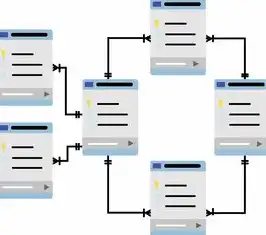Docker has revolutionized the way we manage and deploy applications by providing a lightweight and portable solution for containerization. One of the most common use cases for Docker is to containerize databases like MySQL. In this comprehensive guide, we will explore the process of dockerizing MySQL, from setting up the environment to optimizing performance and ensuring data security.
Setting Up the Environment
Before diving into the specifics of dockerizing MySQL, it's essential to have a solid understanding of the prerequisites:
- Install Docker: Ensure that Docker is installed on your system. You can download Docker from the official website.
- Create a MySQL Image: Start by creating a custom MySQL image tailored to your specific requirements. This involves specifying the version of MySQL you want to use, configuring necessary settings, and installing any required dependencies.
- Build the Dockerfile: Write a
Dockerfilethat defines how the MySQL server should be built and configured within the container. This file will include instructions such as setting up volumes, environment variables, and health checks.
FROM mysql:5.7 COPY ./my.cnf /etc/mysql/conf.d/my.cnf EXPOSE 3306 CMD ["mysqld"]
- Create a Custom MySQL Image: Use the
Docker buildcommand to create a custom MySQL image based on yourDockerfile. This image will encapsulate all the configurations and settings defined in the file.
docker build -t my-custom-mysql .
- Run the MySQL Container: Once the image is created, run the container using the
docker runcommand. Make sure to specify the appropriate ports and mount persistent storage if needed.
docker run -d --name mysql-container -p 3306:3306 -v /path/to/data:/var/lib/mysql my-custom-mysql
Optimizing Performance
To ensure optimal performance when running MySQL inside a Docker container, consider the following tips:

图片来源于网络,如有侵权联系删除
-
Resource Allocation: Allocate sufficient memory and CPU resources to the container to prevent bottlenecks. Use the
-mand-cflags withdocker runto allocate memory and CPU shares respectively. -
Persistent Storage: Mount a volume to persist data between container restarts. This ensures data integrity and avoids data loss during container shutdowns or crashes.
-
Readiness Probes: Implement readiness probes to check the status of the MySQL service before exposing it to external clients. This helps in gracefully handling startup failures and prevents unnecessary load on the database.
-
Tuning MySQL Configuration: Adjust MySQL configuration parameters within the
Dockerfileor via environment variables to optimize performance based on your workload. Parameters likeinnodb_buffer_pool_size,max_connections, andquery_cache_sizecan significantly impact performance.
Ensuring Data Security
Security is paramount when dealing with sensitive data stored in a MySQL database. Here are some best practices to enhance data security:
-
Network Isolation: Run MySQL containers in a private network segment to minimize exposure to external threats. Use Docker networking features to isolate containers effectively.
-
Secure Communication: Enable SSL/TLS encryption for communication between the MySQL client and server to protect against man-in-the-middle attacks.
-
Access Control: Implement strict access controls by managing user privileges carefully. Avoid granting excessive privileges and regularly review and revoke unnecessary permissions.
-
Regular Updates: Keep both the Docker engine and MySQL server updated with the latest patches and security updates to mitigate vulnerabilities.
Monitoring and Logging
Effective monitoring and logging are crucial for maintaining the health and stability of your MySQL containerized environment. Consider the following strategies:

图片来源于网络,如有侵权联系删除
-
Container Monitoring Tools: Utilize tools like Prometheus and Grafana to monitor key metrics of your MySQL container, such as CPU usage, memory consumption, and query performance.
-
Logging Solutions: Set up centralized logging solutions like ELK Stack (Elasticsearch, Logstash, Kibana) or Fluentd to aggregate and analyze logs from multiple containers efficiently.
-
Alerting Systems: Implement alerting mechanisms to notify administrators promptly about critical events or anomalies detected in the MySQL container.
Scaling and High Availability
As your application grows, scaling and ensuring high availability become important considerations. Here’s how you can approach these challenges:
-
Horizontal Scaling: Scale out by adding more MySQL instances behind a load balancer. Distribute read queries across multiple replicas while keeping write operations on a primary instance.
-
Replication: Set up MySQL replication to achieve redundancy and improve fault tolerance. This allows for failover scenarios where one replica takes over in case the primary fails.
-
Stateful Services: Treat MySQL as a stateful service and plan accordingly for disaster recovery. Regularly back up your data and test restore procedures to ensure smooth recovery.
In conclusion, dockerizing MySQL offers numerous benefits including portability, scalability, and ease of management. By following best practices
标签: #docker mysql 数据



评论列表